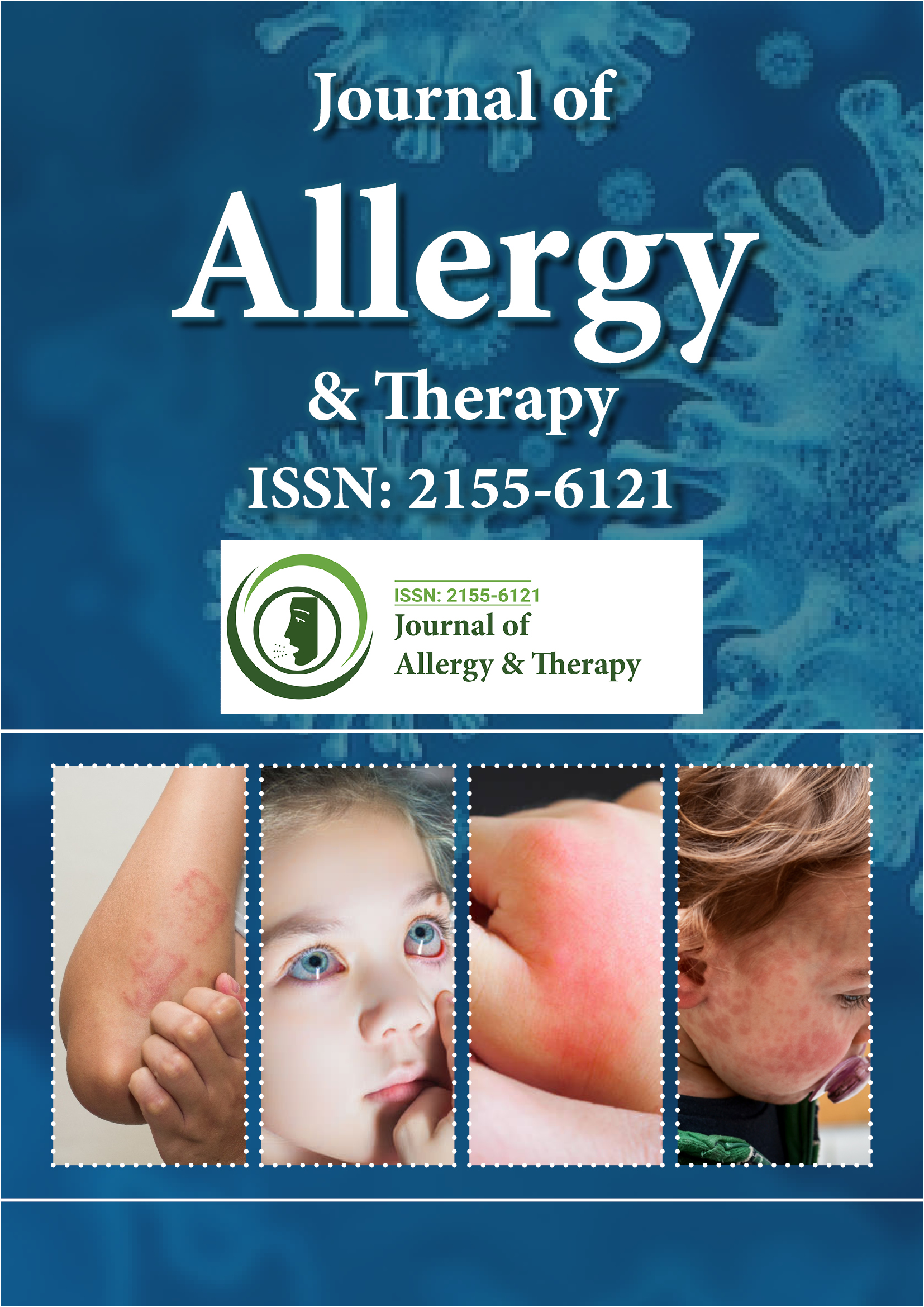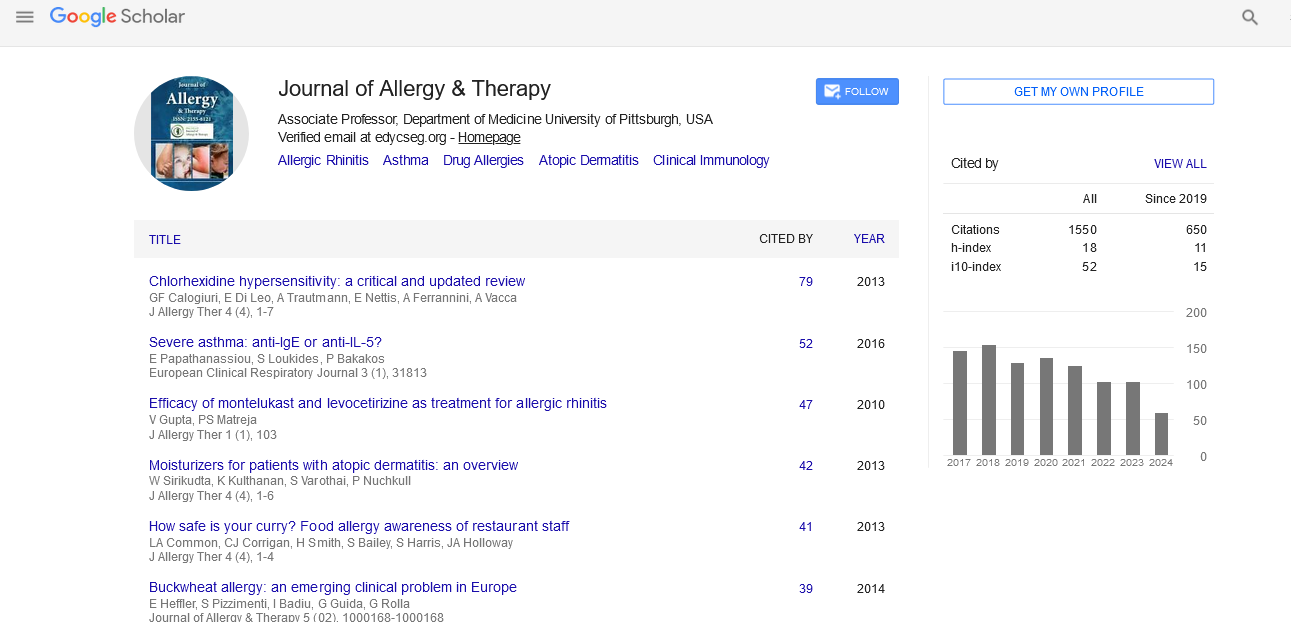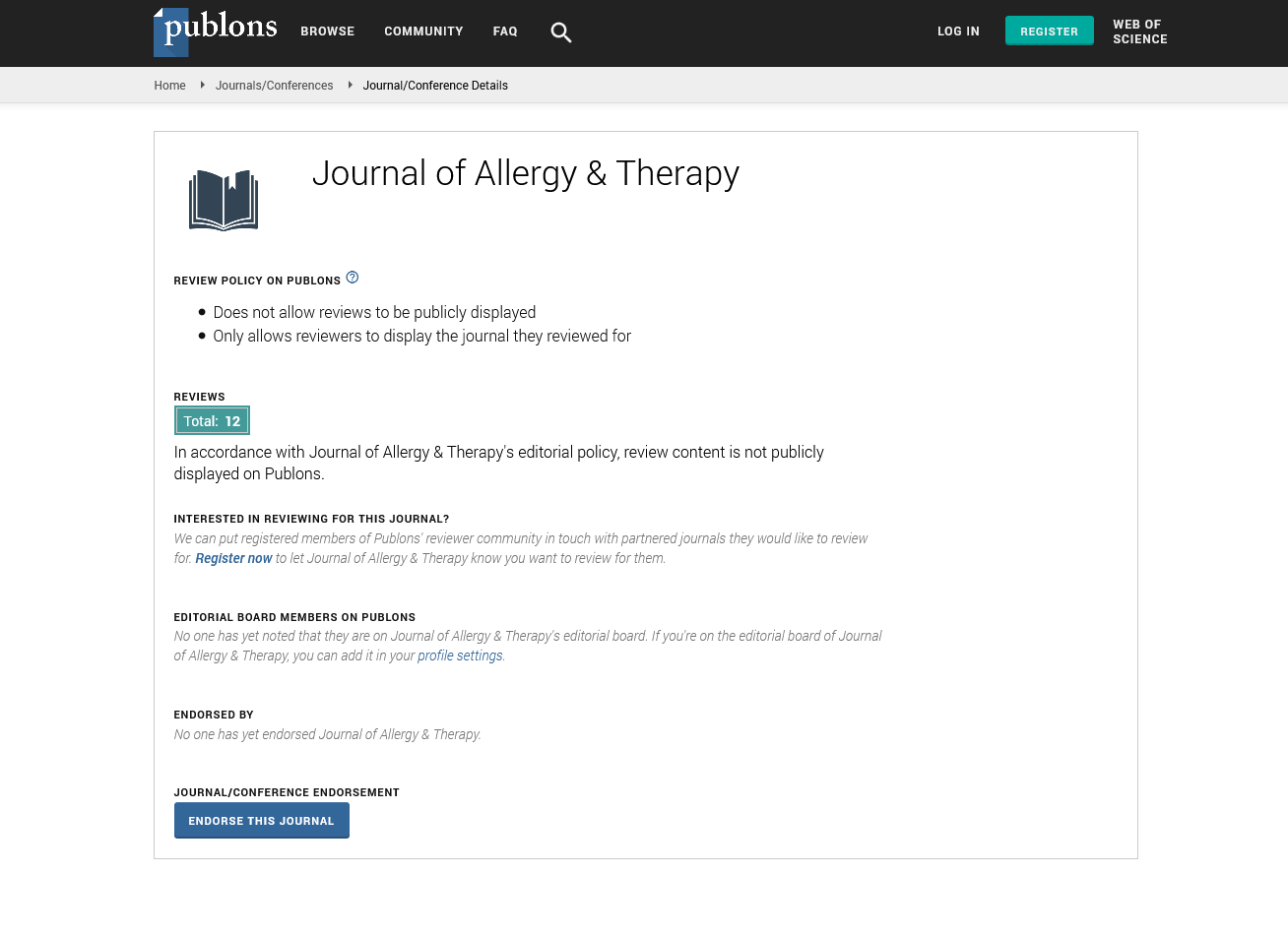PMC/PubMed Indexed Articles
Indexed In
- Academic Journals Database
- Open J Gate
- Genamics JournalSeek
- Academic Keys
- JournalTOCs
- China National Knowledge Infrastructure (CNKI)
- Ulrich's Periodicals Directory
- Electronic Journals Library
- RefSeek
- Hamdard University
- EBSCO A-Z
- OCLC- WorldCat
- SWB online catalog
- Virtual Library of Biology (vifabio)
- Publons
- Geneva Foundation for Medical Education and Research
- Euro Pub
- Google Scholar
Useful Links
Share This Page
Journal Flyer

Open Access Journals
- Agri and Aquaculture
- Biochemistry
- Bioinformatics & Systems Biology
- Business & Management
- Chemistry
- Clinical Sciences
- Engineering
- Food & Nutrition
- General Science
- Genetics & Molecular Biology
- Immunology & Microbiology
- Medical Sciences
- Neuroscience & Psychology
- Nursing & Health Care
- Pharmaceutical Sciences
Opinion Article - (2023) Volume 14, Issue 4
Revolutionary Method of Sublingual Immunotherapy (SLIT) for Treating Allergies and Enhancing Quality of Life
Zhang Polwart*Received: 28-Jul-2023, Manuscript No. JAT-23-23058; Editor assigned: 01-Aug-2023, Pre QC No. JAT-23-23058 (PQ); Reviewed: 18-Aug-2023, QC No. JAT-23-23058; Revised: 25-Aug-2023, Manuscript No. JAT-23-23058 (R); Published: 01-Sep-2023, DOI: 10.35248/2156-6121.23.14.357
Description
Allergies affect millions of people worldwide, leading to bothersome symptoms such as sneezing, itching, congestion, and in severe cases, life-threatening anaphylactic reactions. For many allergy sufferers, finding effective and convenient treatment options is significant to improving their quality of life. Sublingual Immunotherapy (SLIT) has emerged as a revolutionary approach to allergy treatment, offering a safer and more convenient alternative to traditional allergy shots. In this comprehensive exploration of SLIT, we will delve into its mechanism of action, benefits, effectiveness, safety, and the conditions it can address, widely known on its role in reshaping the landscape of allergy therapy.
Understanding allergic reactions
Before delving into SLIT, it's essential to grasp the underlying mechanisms of allergic reactions. Allergies occur when the immune system overreacts to harmless substances, such as pollen, dust mites, pet dander, or specific foods. In response to exposure to these allergens, the immune system releases chemicals, including histamine, that trigger allergy symptoms. Common allergic conditions encompass allergic rhinitis (hay fever), allergic conjunctivitis, allergic asthma, and allergic reactions to insect stings or food.
Traditional allergy treatment approaches
Traditional methods of managing allergies include allergen avoidance, symptom relief through medications, and allergenspecific immunotherapy, commonly known as allergy shots. While allergen avoidance is an essential preventive measure, it is often challenging to implement fully, especially in cases of environmental allergens. Medications such as antihistamines, decongestants, corticosteroids, and epinephrine (for severe allergic reactions) offer symptomatic relief but do not address the root cause of allergies.
Immunotherapy
Immunotherapy is a treatment approach aimed at modifying the body's immune response to allergens. The fundamental concept is to induce immune tolerance, making the immune system less reactive to specific allergens. Traditional allergy shots involve injecting gradually increasing doses of allergen extracts under the skin. Over time, this helps the immune system become less sensitive to the allergens, ultimately reducing allergic reactions.
Introduction to Sublingual Immunotherapy (SLIT)
Sublingual Immunotherapy (SLIT) is a relatively recent addition to the field of allergy treatment. Instead of delivering allergen extracts through injections, SLIT involves placing drops or tablets containing allergen extracts under the tongue (sublingually). This route of administration allows for direct contact between the allergens and the immune system's specialized cells in the oral mucosa, facilitating the development of immune tolerance.
Mechanism of action
The mechanism of action of SLIT closely mirrors that of traditional allergy shots but with distinct advantages. When allergen extracts are placed sublingually, they are absorbed by blood vessels under the tongue and enter the bloodstream. This exposure to allergens in a controlled and gradual manner prompts a shift in the immune system's response. Over time, the immune system becomes less reactive to the specific allergens, reducing the severity of allergic reactions.
Conditions treated with SLIT
Allergic rhinitis (Hay fever): SLIT is highly effective in reducing the symptoms of allergic rhinitis, such as sneezing, runny nose, nasal congestion, and itchy or watery eyes.
Allergic conjunctivitis: It can alleviate symptoms of eye allergies, including redness, itching, and watering of the eyes.
Allergic asthma: SLIT may help manage asthma symptoms triggered by allergens, such as pollen or dust mites.
Hypersensitivity to insect stings: SLIT can be used to desensitize individuals with severe allergies to insect stings, reducing the risk of anaphylactic reactions.
Food allergies: While research is ongoing, SLIT has shown impact in treating some food allergies, such as peanut allergy.
Atopic dermatitis (eczema): SLIT may be considered for individuals with eczema triggered or aggravated by specific allergens.
Future of allergy treatment
Sublingual Immunotherapy (SLIT) represents a significant advancement in the field of allergy treatment, offering a convenient, safe, and effective means of reducing allergic reactions and improving the quality of life for allergy sufferers. Its ability to induce immune tolerance to a wide range of allergens, from pollen and dust mites to specific foods and insect stings, makes it a versatile option for individuals with various allergic conditions.
While SLIT is not a cure for allergies, it provides long-term benefits that can persist even after treatment is discontinued. As research in immunotherapy continues to advance, potential of further expanding the scope of SLIT and potentially offering relief to individuals with previously challenging-to-treat allergies.
As with any medical treatment, it is essential for patients to work closely with their healthcare providers, particularly allergists or immunologists, to determine the most appropriate allergy management strategy, whether it involves SLIT or other treatment modalities. With the ongoing evolution of allergy therapy, posibility for a brighter future for allergy sufferers, where allergic reactions can be effectively managed and quality of life significantly improved.
Citation: Polwart Z (2023) Revolutionary Method of Sublingual Immunotherapy (SLIT) for Treating Allergies and Enhancing Quality of Life. J Allergy Ther. 14:357.
Copyright: © 2023 Polwart Z. This is an open-access article distributed under the terms of the Creative Commons Attribution License, which permits unrestricted use, distribution, and reproduction in any medium, provided the original author and source are credited.


